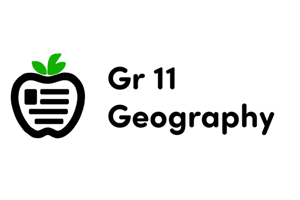Podcast
Questions and Answers
Which of the following describes the relationship between altitude and atmospheric pressure?
Which of the following describes the relationship between altitude and atmospheric pressure?
- Pressure decreases with altitude. (correct)
- Pressure increases linearly with altitude.
- Pressure increases exponentially with altitude.
- Pressure is constant regardless of altitude.
The layer of the atmosphere in which most weather phenomena occur is the:
The layer of the atmosphere in which most weather phenomena occur is the:
- Thermosphere
- Mesosphere
- Troposphere (correct)
- Stratosphere
At what relative humidity percentage does saturation occur?
At what relative humidity percentage does saturation occur?
- 75%
- 50%
- 100% (correct)
- 99%
What is the standard atmospheric pressure at sea level?
What is the standard atmospheric pressure at sea level?
Which type of cloud is associated with thunderstorms?
Which type of cloud is associated with thunderstorms?
The temperature in the troposphere typically:
The temperature in the troposphere typically:
What is the primary composition of dry air?
What is the primary composition of dry air?
Which atmospheric layer contains the ozone layer?
Which atmospheric layer contains the ozone layer?
Which of the following is true about the tropopause?
Which of the following is true about the tropopause?
Which of the following causes the formation of clouds?
Which of the following causes the formation of clouds?
Which of the following processes describes the change of water from a liquid to a solid state?
Which of the following processes describes the change of water from a liquid to a solid state?
What causes wind?
What causes wind?
Which type of fog is formed by the cooling of land at night?
Which type of fog is formed by the cooling of land at night?
What is the definition of 'brume' (haze)?
What is the definition of 'brume' (haze)?
Which of the following describes the conditions necessary for the formation of 'givrage' (icing) on an aircraft?
Which of the following describes the conditions necessary for the formation of 'givrage' (icing) on an aircraft?
What does a METAR provide?
What does a METAR provide?
In relation to the movement of air around high and low pressure systems in the Northern Hemisphere, air rotates:
In relation to the movement of air around high and low pressure systems in the Northern Hemisphere, air rotates:
What is the typical temperature lapse rate in the troposphere?
What is the typical temperature lapse rate in the troposphere?
Which of the following best describes the formation of a sea breeze?
Which of the following best describes the formation of a sea breeze?
What is the primary cause of the jet stream?
What is the primary cause of the jet stream?
Flashcards
What is the Atmosphere?
What is the Atmosphere?
Gaseous envelope surrounding the Earth.
What are the atmospheric layers?
What are the atmospheric layers?
Troposphere, stratosphere, mesosphere, thermosphere and exosphere.
What is the Tropopause?
What is the Tropopause?
The point of separation between the troposphere and the stratosphere.
Main components of dry air?
Main components of dry air?
Signup and view all the flashcards
Key parameters describing the atmosphere?
Key parameters describing the atmosphere?
Signup and view all the flashcards
Standard conditions at sea level?
Standard conditions at sea level?
Signup and view all the flashcards
What is pressure?
What is pressure?
Signup and view all the flashcards
How does atmospheric pressure change with altitude?
How does atmospheric pressure change with altitude?
Signup and view all the flashcards
What is an anticyclone?
What is an anticyclone?
Signup and view all the flashcards
What is QFE?
What is QFE?
Signup and view all the flashcards
What is QNH
What is QNH
Signup and view all the flashcards
What does setting 1013 do?
What does setting 1013 do?
Signup and view all the flashcards
What is Temperature?
What is Temperature?
Signup and view all the flashcards
How does temperature change in the troposphere?
How does temperature change in the troposphere?
Signup and view all the flashcards
What is convection?
What is convection?
Signup and view all the flashcards
Three forms of water in the atmosphere??
Three forms of water in the atmosphere??
Signup and view all the flashcards
What is water vapor?
What is water vapor?
Signup and view all the flashcards
What is relative humidity?
What is relative humidity?
Signup and view all the flashcards
What is the dew point?
What is the dew point?
Signup and view all the flashcards
What is water super-saturation?
What is water super-saturation?
Signup and view all the flashcards
Study Notes
L'Atmosphère (The Atmosphere)
- It is a gaseous envelope that surrounds the earth for hundreds of kilometers.
- Gas becomes rarefied with altitude.
- 99% of the atmosphere's total mass resides from 0-30 km in altitude.
- It is divided into troposphere, stratosphere, mesosphere, and thermosphere layers.
- The separation surface between the troposphere/stratosphere is called the tropopause, around 11 km altitude.
- The air's composition is 99.97% dry air of:
- 78% nitrogen
- 21% oxygen
- 1% argon
- ozone (between 15-45 km)
- Includes water vapor and dust.
- Like any gas, it is described by parameters:
- Temperature
- Pressure
- Humidity
- Wind
- The standard atmosphere is an average used for aeronautical needs.
- It describes aircraft performance and location vertically.
- At sea level, standard temperature is 15°C and standard pressure is 1013.25 hPa.
- 1 hPa measures every 28 feet, or 2 degrees every 1000 feet, at 330m.
La Pression (Pressure)
- Pressure is the weight of the air column from ground to the upper limit of the atmosphere over 1 m².
- The unit of measure is the Pascal, meteorologically using the hectopascal (1 hPa = 100 Pa).
- When ascending, airborne molecules decrease, as does pressure with altitude.
- In the atmosphere's lower layers, pressure decreases.
- High pressure is an anticyclone (symbol A or H).
- Low pressure is a depression (symbol D or L).
- Isobars connect points of equal pressure.
- QFE: atmospheric pressure at the aerodrome level; indicates height between aircraft and aerodrome.
- QNH: atmospheric pressure at sea level; indicates aircraft altitude in relation to sea level.
- 1013 is standard atmospheric pressure at sea level.
- A setting of 1013 is used for flight level (FL).
La Temperature (Temperature)
- Definition: the degree of hotness or coldness that can be measured in Celsius (°C) within France
- Temperature decreases in the troposphere with increasing altitude, reaching -56.5°C at its upper limit.
- The tropopause, i.e. the transition between troposphere and stratosphere, marks the beginning of temperature inversion or increase with altitude.
- In the troposphere, temperature decreases by 2°C/1000 ft or 6.5°C/1000 m.
- Solar radiation warms the earth, which diffuses heat by radiation to lower air layers.
- Air "bubbles" rise by convection and are replaced by cooler air.
- Vertical ascending/descending convection currents are established, developing cumulus clouds at the top.
- Pilots use these 'pumps' by circling in a spiral, also known as soaring.
L'eau dans l'Atmosphere (Water in the Atmosphere)
- Water exists in the atmosphere in solid, liquid, and gas form.
Vapeur d'eau (Water vapour)
- It is water in a gaseous state contained in the air and increases with temperature.
- Humidity is the amount of water vapor in the air.
- Relative humidity is the ratio of actual to maximum water vapor.
- 100% relative humidity indicates saturation.
- Dew point refers to the temperature air must be cooled to for relative humidity to reach 100%.
- Condensation/evaporation occurs when the air temperature drops below the dew point.
- Tiny water droplets form around various dust particles suspended in the air.
- The reverse phenomenon is evaporation.
- Solidification/fusion occurs if cooled below 0°C to become ice or snow, reversing back again during fusion.
- Superfusion describes atmospheric water droplets remaining in a liquid state below 0°C, commonly found in fog and clouds down to -40°C.
- Condensation trails are created by condensation of water vapor emitted by aircraft engines at high altitudes.
- Water droplets in suspension become ice crystals, creating white trails behind airplanes.
Les Nuages (Clouds)
- Clouds consist of visible sets of liquid water and/or ice crystal particles.
- They form via cooling of ascending air, where maximum water vapor amount increases with relative humidity, condensing around small particles when relative humidity hits 100%.
- Cloud base above 6 km consists of ice crystals with the prefix "cirro".
- Cloud base between 2 and 6 km consists of ice crystals and liquid water droplets with the prefix "alto".
- Cloud base between ground and 2 km consist of liquid water without a prefix.
- Some clouds show greater vertical extension, indicating rain or bad weather with the prefix/suffix "nimbus."
Les Precipitations (Precipitation)
- Precipitation consists of a set of liquid and/or solid particles that fall from a cloud.
- Within the cloud, negative temperatures permit coexistence of ice crystals and supercooled water droplets.
- Through water vapor transfer and collision, cloud components grow to precipitate.
- Precipitation nearly always initiates as a snowflake, transforming into raindrops if it passes a layer above 0°C.
- Drizzle refers to small water droplets of less than 0.5 mm in diameter, close together and stemming from low-lying clouds (Stratus) and fog.
- Rain represents larger droplets originating from thicker, expansive clouds (Altostratus, Nimbostratus, Cumulonimbus, Stratocumulus, Altocumulus).
- Snow comprises ramified ice crystals, sometimes star-like, formed between 0° and -10°, clustered into flakes spanning 0.5 to 2.5 cm, with the same origin as rain.
- Hail are large ice globules ranging from millimeters to centimeters in diameter, originating from unstable clouds with strong vertical development (Cumulonimbus).
- Showers are sudden, intense, localized and short-lived with unstable clouds of significant vertical development.
- This includes rain, snow, and hail showers.
Le Vent (Wind)
- Wind is air in horizontal motion.
- If the earth was still, wind would flow from high to low pressure, but the earth's rotation deflects air movement to the right in the northern hemisphere.
- Wind direction aligns almost parallel to isobars.
- In the northern hemisphere, wind travels clockwise around anticyclones and counter-clockwise around depressions.
- In the southern hemisphere, these circulations are reversed.
- Wind force directly relates to the spacing of isobar lines, where closed lines mean stronger winds.
- Jet streams feature rapid air currents of hundreds of kilometers across and several kilometers thick, located around 10 km altitude.
- Jet streams circle the earth westward, with wind speeds reaching 200-300 km/h.
Les Brises (Breezes)
- Local, consistent wind by lakes, sea, mountains, and valleys result from temperature variations in the lower troposphere in conjunction with daily cycles.
Les brises en regions cotieres (Coastal breezes)
- Land temperature varies more and faster than water.
- Sea breezes occur during the day because land heats up faster than the sea surface; the upward air creates a depression that pulls in colder air above the sea.
- Land breezes occur because the night air in contact with soil cools faster than air contacting the sea, reversing air.
Les brises en regions montagnueses (Mountain breezes)
- Mountain and valley breezes occur during the day because the sun-facing slopes warm and rise, leading air at the valley bottom to push up the mountain.
- At night, the phenomenon reverses.
- Slope breezes combine with overall wind; and climbers use the updraft along the slopes.
Circulation Generale (General Circulation)
- Definition: a large expanse of air where temperature and humidity vary little.
- Certain global regions have uniform temperature and humidity, which air masses inherit.
- Air masses move according to general atmospheric circulation principles: cold air flows to the equator while hot air heads to the poles.
- They change when passing over regions with other characteristics.
- Air masses are classified by temperature and humidity.
- Temperature
- Arctic (Very cold)
- Polar (cold)
- Tropical (warm)
- Equatorial (very warm)
- Humidity
- Continental (dry)
- Maritime (humid)
- Several masses can reach France with characteristic weather:
- Air polaire maritime: cumuliform clouds and showers.
- Air polaire continental: clear and dry with stratus or stratocumulus.
- Air tropical maritime: fog or low stratiform clouds.
- Air tropical continental: storms over high grounds.
Frontologie (Frontology)
- Fronts lie on a separation surface between cold and warm air masses that deforms under air pressure.
- Front undulation produces two limits:
- Warm front: warm air pushes cold air in front and above it.
- Cold front: cold air pushes warm air in front and above it.
- After disruption, the cold front moves faster than the warm front.
- During occlusion, the cold front catches the warm front, pushing it upwards.
Brume Brouillard (Haze and Fog)
- Haze is suspended microscopic water droplets, reducing visibility between 1 and 5 km.
- Dry haze originates from solid particles in the air (sand, dust) not saturated humidity.
- This disruption occurs from regional aspects (desert-based sandstorms) or effects tied to society, tech, and econ output.
- Fog consists of smaller droplets or ice crystals, reducing visibility to under 1 km.
- Fog forms primarily through cooling of a humid air mass, where refrigerating causes saturation, then condensation.
Le Givrage (Icing)
- Icing is an opaque or clear ice deposit.
- Moderate icing and heavy icing can occur.
- Icing is due to the presence of liquid-form water in clouds at sub-zero temperatures.
- Upon impact with plane surfaces exposed to relative wind (nose, wing leading edges, engine air intakes, propellers), liquid turns to ice, accumulating there.
- Icing poses an aviation hazard.
- It can cause:
- Aircraft overload
- Airfoil deformation (reducing lift and increasing drag)
- Sensor obstruction
- Instrument failure
- Control seizing
- Prevention is best achieved on the ground by de-icing before departure and applying protective liquid.
- In flight, anticipate/manage via anti-icing systems like windshield defrosters, propeller blades, pitot tubes, and inflatable leading-edge boots.
- De-ice boots are a flexible surface on the edges.
Carte TEMSI (TEMSI Chart)
- A TEMSI is a schematic chart of significant, expected weather, produced every three hours.
- The chart incorporates significant phenomena and cloud masses, explained via symbols:
- Fronts: cold, warm and occluded
- isotherm levels for 0° and -10°
- Types of precipitation
- Cloud cover (FEW, SCT, BKN or OVC)
Carte des Vents et des Temperatures Prevus (Forecasted Wind and Temperature Chart)
- Charts indicate wind and temperature at FL020 over four periods: 00h TU, 06h TU, 12h TU, 18h TU.
- Temperature indicates a + if positive and no sign when negative.
- Wind is shown by arrows, barbs, and pennants, indicating wind direction and speed.
METAR TAF
- METAR is an airport observation report.
- TAF provides airport weather forecast.
- Includes information on time, wind, visibility, clouds, and precipitation.
Studying That Suits You
Use AI to generate personalized quizzes and flashcards to suit your learning preferences.




